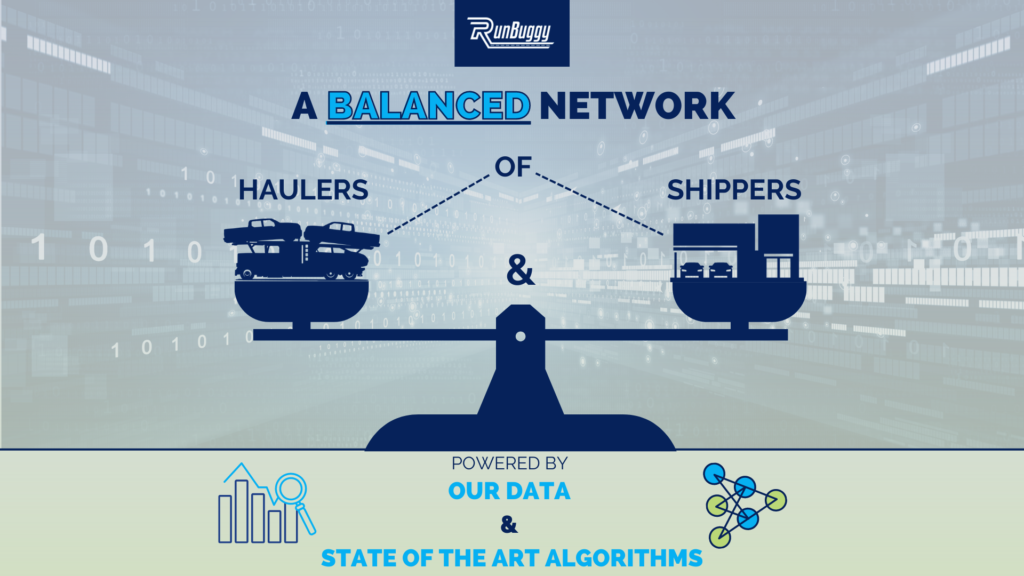Introduction
RunBuggy has an amazing network of shippers and haulers, and we’re always working to improve their user experience. For shippers this means planning, communicating, and moving their orders quicker and more efficiently while maintaining competitive pricing. For haulers, this means keeping their trucks full and bringing them more profit across a healthy selection of available orders.
The Challenge of Balancing the Network
One way that RunBuggy is able to achieve these goals is by balancing our network. If we have an excess of shipper orders in a particular area, then the local haulers will have plenty of work, but the shipper’s orders will be moved much slower. Alternatively, if we have a few shipper orders but many available haulers, then orders will be moved quickly. However, it becomes much harder to fill trucks for haulers which decreases hauler profit and increases shipper cost. In order to address this issue, RunBuggy balances our network of shippers and haulers to maximize value for all customers. We work diligently to keep our network balanced both in real-time and in alignment with our growth; we strategically grow our network in ways that will maximize value for shippers, haulers, and the entire RunBuggy family. This is an incredibly difficult problem with no easy answers. We are only able to do this because of the power of our data and algorithms. With thousands of daily moves it is not possible for anybody, even our industry-leading Operations team, to keep an accurate picture of the order balance.
How Does RunBuggy Balance the Network?
One of our algorithms constantly monitors the orders in the system and looks for areas where congestion is beginning. We then relieve the congestion by identifying haulers that would like to move these specific orders. We can gauge hauler interest in the orders by comparing to their preferences and truck capacities outlined for us. To better match orders with haulers on our platform, we look at their previous order history to determine their compatibility. We group these orders together so that the most vehicles can be moved with the least work. Finally, we send personalized messages to the haulers that would be most interested in the available orders. This is all done using our state of the art data science algorithms.
One obvious type of congestion we look for is geographic. For example, too many orders in a particular location. However, geography is not the only factor that determines a hauler’s interest in an order.
Other factors include:
- The distance of the moves, whether they are across the city or the country.
- Whether the hauler can take a non-operational vehicle or not.
- The specific vehicle requirements and attributes, such as;
- If they require an enclosed hauler
- If the vehicle is oversized
- If the vehicle is being delivered to a dedicated business or a home
All vehicle moves have specific requirements. RunBuggy takes all these factors (and more) into account when recommending orders to our wonderful haulers.
Balanced Expansion
We can further leverage these ideas and grow our network in a targeted way. If we were to expand into a new area where we have no shippers, our hauler network would not have business. Alternately, if we have no haulers in the area, our shippers would be able to get their vehicles moved. However, with the use of data science at RunBuggy, we are able to resolve this dilemma. As as we grow our network by adding shippers and haulers, we monitor the dynamics and keep them in balance so that the network grows in a healthy way that benefits everyone.



